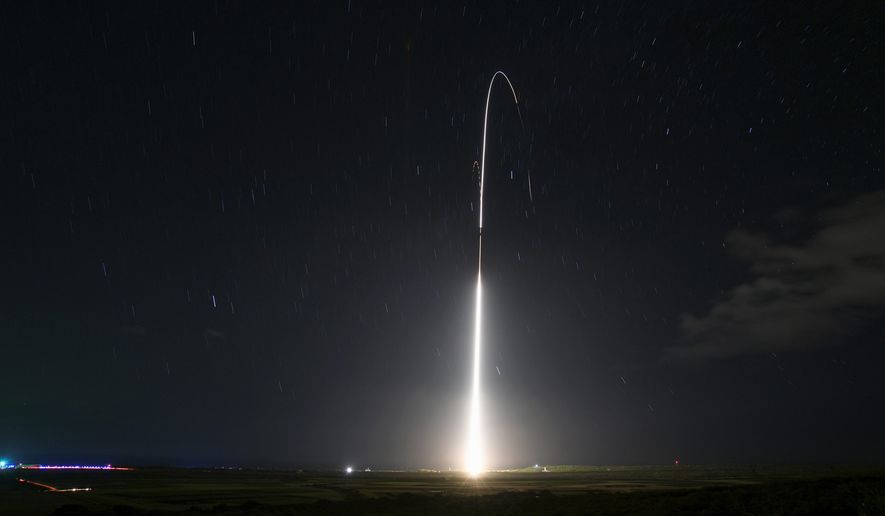A Navy warship and the Pentagon’s Missile Defense Agency on Saturday failed twice in a key test to shoot down a medium-range ballistic missile, raising questions about America’s readiness to intercept potential enemy attacks.
The Defense Department did not reveal a specific location, but it’s believed the test took place somewhere off the coast of Hawaii.
The announcement of the test’s failure comes just one day after the Biden administration requested a fiscal 2022 budget of $8.9 billion for the Missile Defense Agency (MDA), down from its 2021 figure of $9.1 billion.
In the past, the U.S. military has conducted successful missile intercepts in the region. It’s unclear exactly what led to Saturday’s failure, and Pentagon officials say a thorough investigation is already under way.
“The objective of the test was to demonstrate the capability of a ballistic missile defense (BMD)-configured Aegis ship to detect, track, engage and intercept a medium range ballistic missile target with a salvo of two Standard Missile-6 Dual II (BMD-initialized) missiles. However, an intercept was not achieved,” the MDA said in a brief statement. “Program officials have initiated an extensive review to determine the cause of any problems which may have prevented a successful intercept and will thoroughly analyze the results.”
Perhaps adding insult to injury, a Russian naval surveillance ship is believed to have been in the theater over the weekend and its crew may have witnessed the failed test. U.S. officials have been tracking the Russian vessel since early last week.
“U.S. Pacific Fleet is aware of the Russian vessel operating in international waters in the vicinity of Hawaii and will continue to track it through the duration of its time here,” fleet spokesman Capt. John Gay said in a statement to the media outlet USNI News last week.
“Through maritime patrol aircraft, surface ships and joint capabilities, we can closely monitor all vessels in the Indo-Pacific area of operations,” Capt. Gay said.
America’s ability to intercept missiles in the Pacific is key to the nation’s defense strategy. Nations such as China and North Korea theoretically could launch ballistic-missile attacks toward Hawaii and other U.S. targets.
The weekend failure aside, MDA officials argue that its 2022 budget contains enough money “to address the emergence of new and more advanced threats.”
“The budget request continues our advanced research program to explore innovative and disruptive technologies and also to develop emerging capabilities to enhance our missile defenses,” Michelle C. Atkinson, director of operations at the MDA, told reporters Friday during a Pentagon budget briefing.
“This budget also includes funds for system engineering to continue to provide critical products and processes needed to combine element missile defense capabilities into a single, integrated and layered system,” Ms. Atkinson said.
• Ben Wolfgang can be reached at bwolfgang@washingtontimes.com.




Please read our comment policy before commenting.